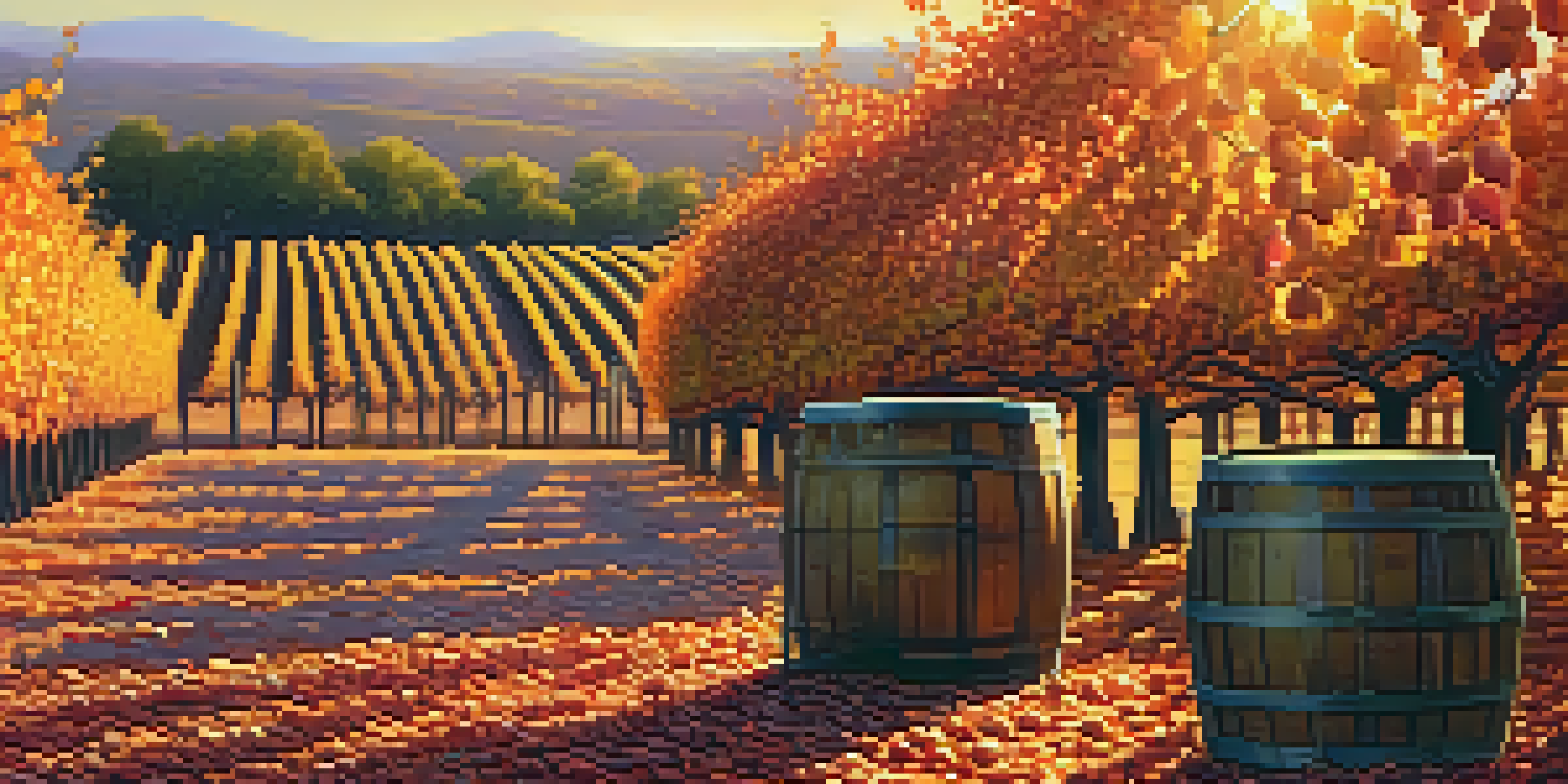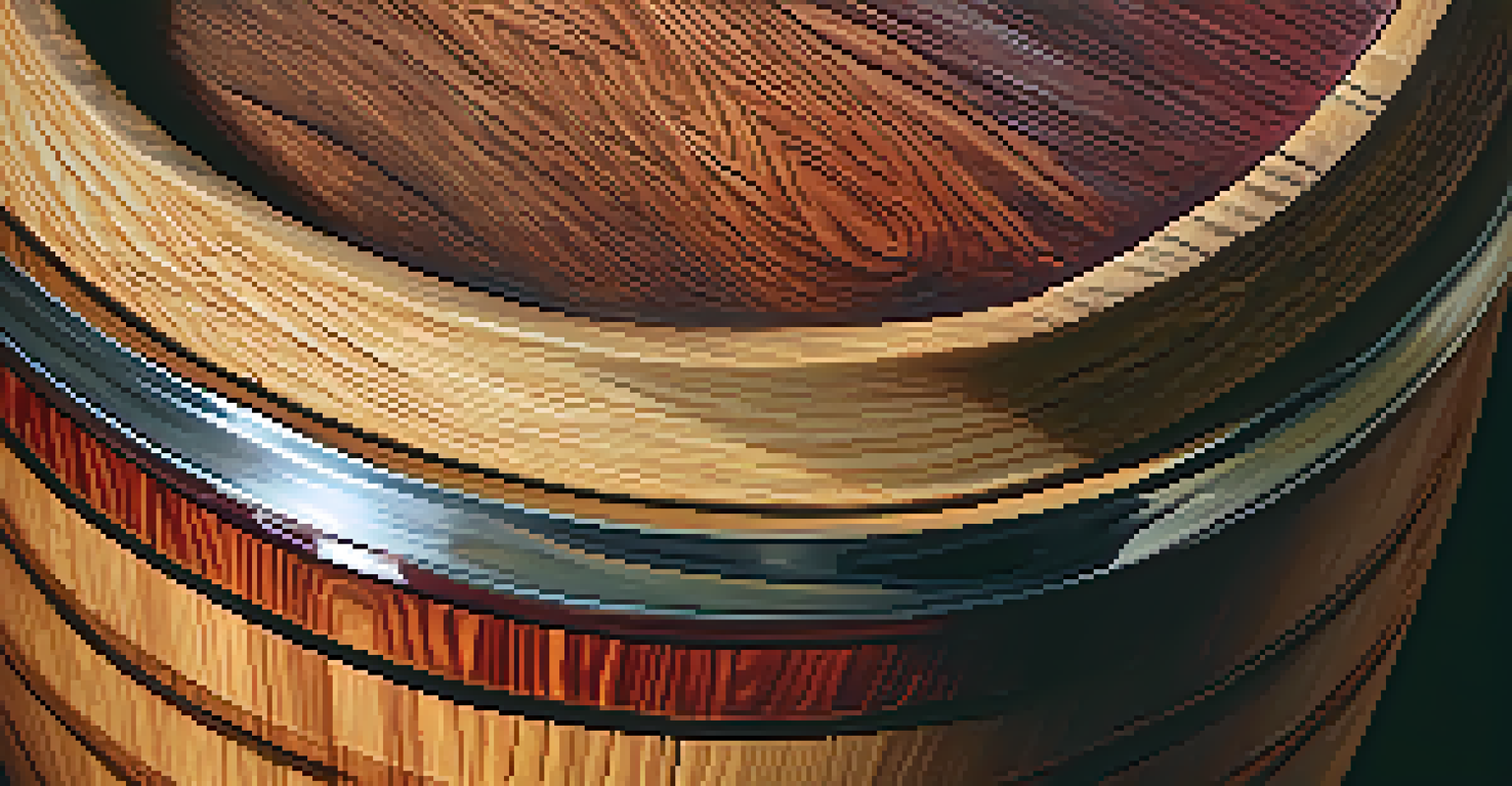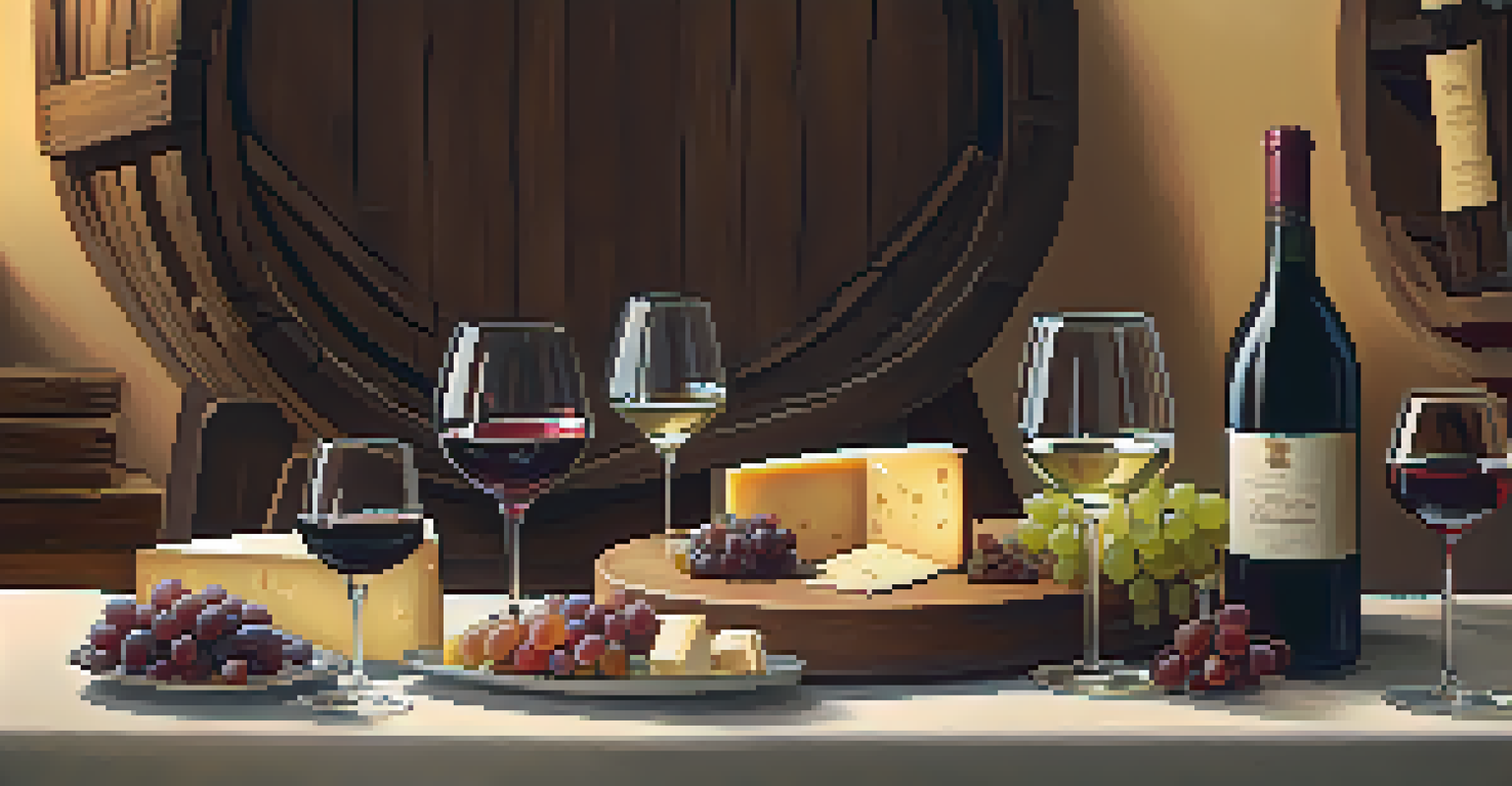The Role of Oak Barrels in Crafting Luxury Wines

Understanding Oak Barrels: A Winemaker’s Secret Weapon
Oak barrels have been a staple in winemaking for centuries, serving as a crucial element in crafting luxury wines. Their unique properties not only provide flavor but also influence the wine's texture and aroma. When winemakers choose oak barrels, they select a tool that can profoundly transform the character of the wine.
Wine is sunlight, held together by water.
The wood from oak trees contains compounds that interact with the wine during aging, contributing to a complex flavor profile. For instance, the vanilla notes often found in red wines can be attributed to the natural vanillin present in oak. This transformation is what makes oak barrels so coveted in the winemaking process.
Moreover, oak barrels also play a vital role in the oxygenation of wine. The tiny pores in the wood allow a slow exchange of oxygen, which helps soften tannins and enhance overall flavor. This gentle aging process is essential for producing the rich, luxurious wines that many connoisseurs seek.
Types of Oak Used in Barrel Making: French vs. American
When it comes to oak barrels, not all wood is created equal. French oak is prized for its fine grain and ability to impart subtle, sophisticated flavors like spice and chocolate. American oak, on the other hand, is known for its more robust characteristics, offering bolder flavors like coconut and caramel.

The choice between French and American oak can significantly influence the final product. For example, wines aged in French oak tend to have a more elegant profile, perfect for delicate varietals like Pinot Noir. In contrast, American oak can elevate fuller-bodied wines, such as Cabernet Sauvignon, with its assertive flavors.
Oak Barrels Enhance Wine Flavor
The unique properties of oak barrels contribute essential flavors and aromas to luxury wines through interaction with the wood during aging.
Winemakers often experiment with different types of oak barrels to achieve the desired balance in their wines. By blending wines aged in French and American oak, they can create a complex and layered taste experience that appeals to a wider audience.
The Toasting Process: Unlocking Flavor Potential
Toasting is a critical step in barrel production that can dramatically alter the flavor profile of the wine. During toasting, the inside of the barrel is heated, which caramelizes the sugars in the wood and releases various flavor compounds. This process can range from light to heavy, depending on the desired outcome.
The best wines are those we drink with friends.
A light toast might introduce subtle flavors, while a heavy toast can bring forth more pronounced notes of smoke and spice. Winemakers choose the level of toasting based on the specific wine they are producing, ensuring that the barrel complements rather than overwhelms the wine's natural characteristics.
By carefully selecting the toast level, winemakers can enhance the complexity of their luxury wines. For example, a Cabernet Sauvignon aged in heavily toasted oak might exhibit a bold, smoky character, while a Chardonnay in a lightly toasted barrel may showcase delicate floral notes.
Aging in Oak: The Time Factor in Crafting Luxury Wines
The aging process in oak barrels is not just about flavor; it's also about time. Luxury wines typically spend months, if not years, maturing in barrels, allowing the wine to develop deep, intricate flavors. This patience is a hallmark of high-quality winemaking.
During aging, the wine continues to evolve as it interacts with the wood and the air. This slow transformation can lead to a smoother mouthfeel and a more balanced taste. The longer the wine ages in oak, the more pronounced its character becomes, often resulting in a wine that is rich and luxurious.
Types of Oak Influence Wine Profiles
The choice between French and American oak barrels can significantly alter the wine's character, with each type imparting distinct flavors.
However, aging too long can lead to over-oaking, where the wood's flavors overpower the wine. Striking the right balance is essential, and it requires the expertise of the winemaker to determine the optimal aging period for each varietal.
The Impact of Oak Barrels on Wine Aroma and Flavor
One of the most significant contributions of oak barrels is the enhancement of aroma and flavor in wine. As wine ages in oak, it absorbs various compounds that impart desirable characteristics. For instance, the lactones in oak can add creamy, buttery notes, especially in white wines.
Additionally, the interaction between the wine and the barrel can create complex aromas, such as clove, cinnamon, or even toasted bread. These aromas not only elevate the wine but also make the tasting experience more enjoyable and memorable.
This ability to transform a wine's profile is why many luxury wines are aged in oak barrels. The result is a wine that is not only flavorful but also aromatic, providing a sensory experience that captivates wine lovers around the world.
Sustainability and Innovation in Oak Barrel Production
As the wine industry evolves, so does the approach to oak barrel production. Sustainable practices are becoming increasingly important, with many producers focusing on sourcing wood from responsibly managed forests. This shift ensures that future generations can enjoy the rich flavors that oak barrels bring to luxury wines.
Innovation is also at the forefront, with winemakers exploring alternative aging methods. For instance, some are experimenting with hybrid barrels that combine different types of wood or using staves from previously used barrels to create a unique aging environment. These methods not only preserve resources but also add a new layer of creativity to the winemaking process.
Sustainability Shapes Barrel Production
An increasing focus on sustainable practices in oak barrel production ensures a responsible approach to crafting luxury wines while preserving resources.
By embracing sustainability and innovation, the industry is ensuring that oak barrels remain an integral part of luxury wine production while also respecting the environment. This dedication to sustainable practices resonates with consumers who are increasingly concerned about the ecological impact of their choices.
Conclusion: The Indispensable Role of Oak Barrels in Luxury Wine
In conclusion, oak barrels are more than just containers; they are vital tools that enhance the quality and character of luxury wines. From imparting unique flavors to facilitating the aging process, these barrels play a crucial role in the winemaking journey. The careful selection of oak, the toasting process, and the aging time all contribute to the final product.
As consumers, understanding the influence of oak barrels can deepen our appreciation for the wines we enjoy. Next time you savor a glass of luxury wine, take a moment to reflect on the craftsmanship and care that went into its creation, including the role of oak barrels.

Ultimately, the relationship between oak barrels and luxury wine is a testament to the artistry of winemaking. It’s a blend of tradition, innovation, and a deep respect for the craft that results in the exquisite wines we cherish today.